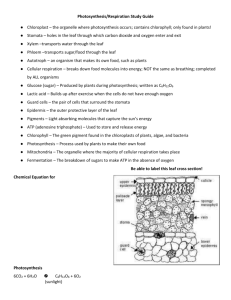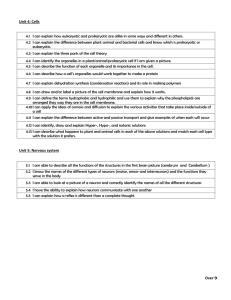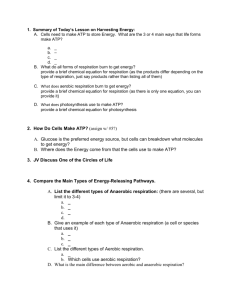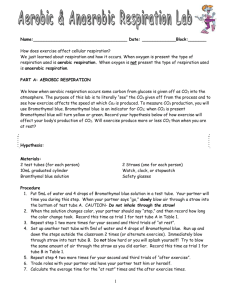Cell Processes Review Answers
advertisement
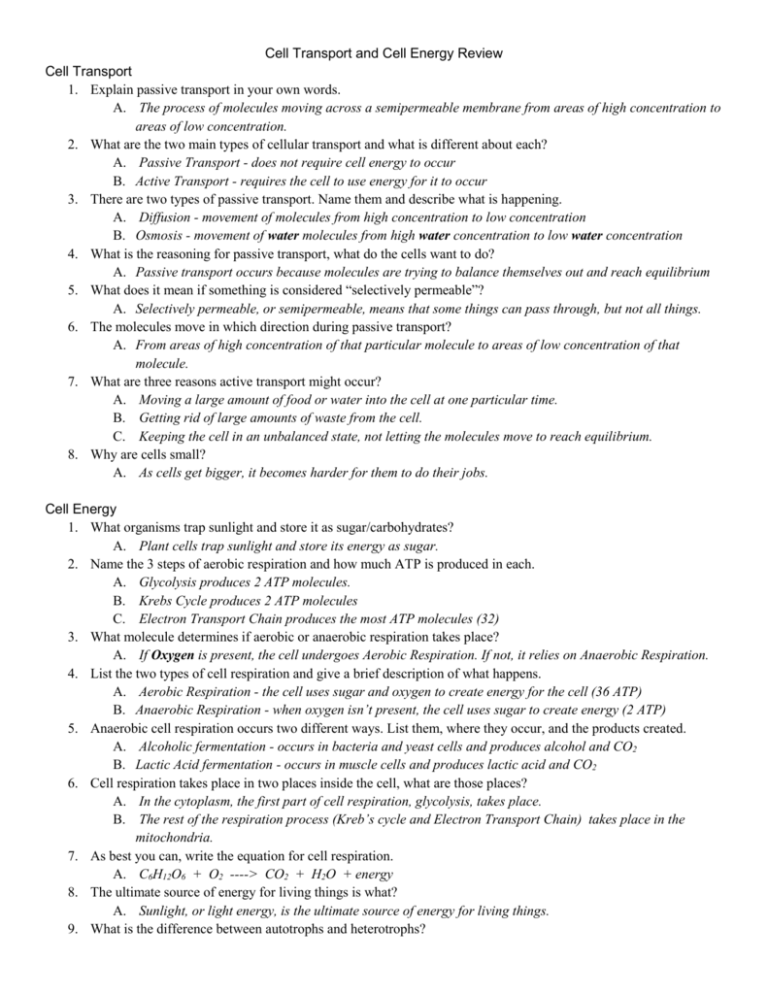
Cell Transport and Cell Energy Review Cell Transport 1. Explain passive transport in your own words. A. The process of molecules moving across a semipermeable membrane from areas of high concentration to areas of low concentration. 2. What are the two main types of cellular transport and what is different about each? A. Passive Transport - does not require cell energy to occur B. Active Transport - requires the cell to use energy for it to occur 3. There are two types of passive transport. Name them and describe what is happening. A. Diffusion - movement of molecules from high concentration to low concentration B. Osmosis - movement of water molecules from high water concentration to low water concentration 4. What is the reasoning for passive transport, what do the cells want to do? A. Passive transport occurs because molecules are trying to balance themselves out and reach equilibrium 5. What does it mean if something is considered “selectively permeable”? A. Selectively permeable, or semipermeable, means that some things can pass through, but not all things. 6. The molecules move in which direction during passive transport? A. From areas of high concentration of that particular molecule to areas of low concentration of that molecule. 7. What are three reasons active transport might occur? A. Moving a large amount of food or water into the cell at one particular time. B. Getting rid of large amounts of waste from the cell. C. Keeping the cell in an unbalanced state, not letting the molecules move to reach equilibrium. 8. Why are cells small? A. As cells get bigger, it becomes harder for them to do their jobs. Cell Energy 1. What organisms trap sunlight and store it as sugar/carbohydrates? A. Plant cells trap sunlight and store its energy as sugar. 2. Name the 3 steps of aerobic respiration and how much ATP is produced in each. A. Glycolysis produces 2 ATP molecules. B. Krebs Cycle produces 2 ATP molecules C. Electron Transport Chain produces the most ATP molecules (32) 3. What molecule determines if aerobic or anaerobic respiration takes place? A. If Oxygen is present, the cell undergoes Aerobic Respiration. If not, it relies on Anaerobic Respiration. 4. List the two types of cell respiration and give a brief description of what happens. A. Aerobic Respiration - the cell uses sugar and oxygen to create energy for the cell (36 ATP) B. Anaerobic Respiration - when oxygen isn’t present, the cell uses sugar to create energy (2 ATP) 5. Anaerobic cell respiration occurs two different ways. List them, where they occur, and the products created. A. Alcoholic fermentation - occurs in bacteria and yeast cells and produces alcohol and CO2 B. Lactic Acid fermentation - occurs in muscle cells and produces lactic acid and CO2 6. Cell respiration takes place in two places inside the cell, what are those places? A. In the cytoplasm, the first part of cell respiration, glycolysis, takes place. B. The rest of the respiration process (Kreb’s cycle and Electron Transport Chain) takes place in the mitochondria. 7. As best you can, write the equation for cell respiration. A. C6H12O6 + O2 ----> CO2 + H2O + energy 8. The ultimate source of energy for living things is what? A. Sunlight, or light energy, is the ultimate source of energy for living things. 9. What is the difference between autotrophs and heterotrophs? 10. 11. 12. 13. 14. 15. A. Autotrophs are able to make their own food (plants convert sun’s energy to food), but heterotrophs can’t and must consume other organisms. Why is the photosynthesis process so important? A. Photosynthesis is important due to the energy it provides all organisms and the oxygen in creates as a waste product that animals use to breathe. What are the six colors that make up “white” light? A. red B. orange C. yellow D. green E. blue F. purple What is the most important pigment to plants and where is it located? A. Chlorophyll is found in the chloroplasts of the plant cell. Write the photosynthesis equation as best you can. A. CO2 + H2O + light energy ----> C6H12O6 + O2 List the two parts of the photosynthesis process and what happens in each. A. Light Dependent Reactions - Light energy breaks up H20 and plant releases O2 B. Calvin Cycle - Energy from LDR uses CO2 to make Glucose (C6H12O6) Why are plants and animals so dependent on each other? A. Plants provide animals with food for energy and oxygen, while animals provide plants with the CO2 necessary to undergo the photosynthesis process. Without each other, both would die off. ***Don’t forget to study your notes as well as the Study Guide.





